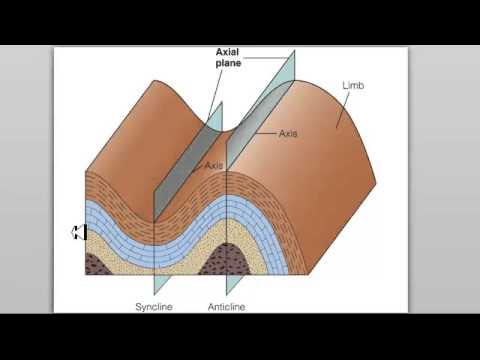Occurrence of Metals | Chemistry
Summary
TLDRThis video explains the occurrence of metals and how they are found in the Earth's crust and seawater. It covers the difference between minerals and ores, emphasizing that only ores contain a high percentage of metals that can be easily extracted. Common metal ores like bauxite (aluminium), haematite (iron), and cinnabar (mercury) are discussed. The video introduces metallurgy, the process of extracting metals, which involves three steps: enrichment of the ore, extraction based on the metal's reactivity, and refining. The process of roasting and reduction for extracting metals like mercury and copper is also explained.
Takeaways
- 🌍 Metals are primarily found in Earth's crust, and some are also dissolved in seawater as salts.
- 🥇 Aluminium is the most abundant metal in Earth's crust, while oxygen is the most abundant non-metal.
- 🔗 Metals like silver, gold, and platinum are least reactive and are found in their free state or native state in the Earth's crust.
- 💡 More reactive metals are usually found in combined states such as sulphides, oxides, or carbonates.
- ⛏️ Minerals that contain a high percentage of metal and from which metals can be easily extracted are called ores, but not all minerals are ores.
- 🔬 Common metal ores include rock salt (sodium), bauxite (aluminium), pyrolusite (manganese), zinc blende (zinc), haematite (iron), copper glance (copper), and cinnabar (mercury).
- 🏭 Metallurgy is the process of extracting metals from ores, and it involves three steps: enrichment of ore, extraction of metal, and refining of metal.
- ⚖️ The reactivity series of metals helps determine the method of extraction, with more reactive metals requiring more complex processes.
- 🔥 Low-reactivity metals like mercury and copper are extracted from their ores through simple heating processes such as roasting and reduction.
- ⚙️ Roasting involves heating sulphide ores in the presence of oxygen to convert them to oxides, followed by reduction to remove oxygen and extract the pure metal.
Q & A
Where are metals commonly found?
-Metals are commonly found in the Earth's crust and in seawater, where they are dissolved in the form of salts.
Which is the most abundant metal and non-metal in the Earth's crust?
-The most abundant metal in the Earth's crust is aluminium, while the most abundant non-metal is oxygen.
Why are metals like silver, gold, and platinum found in their native state?
-Silver, gold, and platinum are found in their native state because they are least reactive according to the reactivity series, meaning they do not react with substances around them.
What are minerals and ores, and how do they differ?
-Minerals are naturally occurring elements and compounds in the Earth's crust. Ores are specific minerals that contain a high percentage of metal, making it easier to extract the metal. All ores are minerals, but not all minerals are ores.
Can you name some important ores of metals?
-Sodium is found in rock salt (sodium chloride), aluminium in bauxite (aluminium oxide), manganese in pyrolusite (manganese dioxide), zinc in zinc blende (zinc sulphide) or calamine (zinc carbonate), iron in haematite (ferric oxide), copper in copper glance (copper(I) sulphide), and mercury in cinnabar (mercuric sulphide).
What is metallurgy and what are its three main steps?
-Metallurgy is the process of extracting metals from their ores. The three main steps are: 1) enrichment of ore, 2) extracting metal from its ore, and 3) refining of metals.
What is the process of 'enrichment of ore'?
-Enrichment of ore is the process of removing impurities like sand and soil from the ore. These impurities are called gangue, and different physical or chemical methods are used based on the properties of the ore and the metal.
How does the reactivity series influence metal extraction?
-The reactivity series divides metals into four categories based on their reactivity. Highly reactive metals (like potassium to aluminium) are extracted differently than less reactive metals (like copper and mercury). Least reactive metals (like silver, gold, and platinum) are often found in their native state.
How is mercury extracted from cinnabar?
-Mercury is extracted from cinnabar (mercuric sulphide) by heating it in the presence of oxygen, which converts it to mercuric oxide. Then, mercuric oxide is further heated, removing the oxygen and leaving behind mercury.
What is roasting and how is it involved in metal extraction?
-Roasting is the process of heating a sulphide ore in the presence of oxygen to convert it into an oxide. It is often followed by reduction, where the oxide is heated to remove oxygen and extract the pure metal.
Outlines

Dieser Bereich ist nur für Premium-Benutzer verfügbar. Bitte führen Sie ein Upgrade durch, um auf diesen Abschnitt zuzugreifen.
Upgrade durchführenMindmap

Dieser Bereich ist nur für Premium-Benutzer verfügbar. Bitte führen Sie ein Upgrade durch, um auf diesen Abschnitt zuzugreifen.
Upgrade durchführenKeywords

Dieser Bereich ist nur für Premium-Benutzer verfügbar. Bitte führen Sie ein Upgrade durch, um auf diesen Abschnitt zuzugreifen.
Upgrade durchführenHighlights

Dieser Bereich ist nur für Premium-Benutzer verfügbar. Bitte führen Sie ein Upgrade durch, um auf diesen Abschnitt zuzugreifen.
Upgrade durchführenTranscripts

Dieser Bereich ist nur für Premium-Benutzer verfügbar. Bitte führen Sie ein Upgrade durch, um auf diesen Abschnitt zuzugreifen.
Upgrade durchführenWeitere ähnliche Videos ansehen
5.0 / 5 (0 votes)






